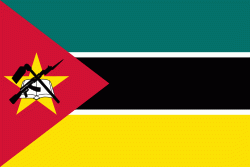Guijá District (Guija)
Guijá District is a district of Gaza Province in south-western Mozambique. The administrative center of the district is Caniçado. The district is located at the south of the province, and borders with Chigubo District in the north, Chibuto District in the east, Chókwè District in the south, and with Mabalane District in the west. The area of the district is 4207 km2. It has a population of 75,303 as of 2007.
The district is located on the left bank of the Limpopo River. A number of minor rivers originate in the district, and crossing into Chibuto District, join the Changane River, a major left tributary of the Limpopo.
The climate is tropical dry semi-arid, with the average annual rainfall ranging 400 mm and 600 mm.
The district is located on the left bank of the Limpopo River. A number of minor rivers originate in the district, and crossing into Chibuto District, join the Changane River, a major left tributary of the Limpopo.
The climate is tropical dry semi-arid, with the average annual rainfall ranging 400 mm and 600 mm.
Map - Guijá District (Guija)
Map
Country - Mozambique
 |
 |
| Flag of Mozambique | |
Notably Northern Mozambique lies within the monsoon trade winds of the Indian Ocean and is frequentely affected by disruptive weather. Between the 7th and 11th centuries, a series of Swahili port towns developed on that area, which contributed to the development of a distinct Swahili culture and dialect. In the late medieval period, these towns were frequented by traders from Somalia, Ethiopia, Egypt, Arabia, Persia, and India.
Currency / Language
| ISO | Currency | Symbol | Significant figures |
|---|---|---|---|
| MZN | Mozambican metical | MT | 2 |
| ISO | Language |
|---|---|
| PT | Portuguese language |















